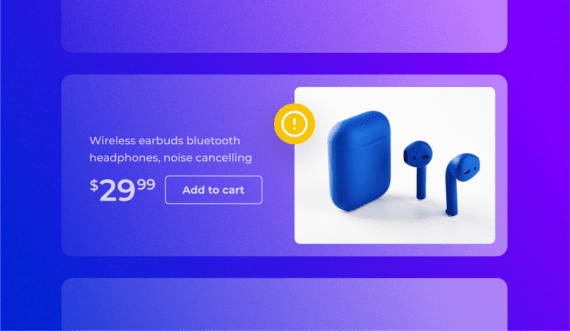Content
expand_moreCustomer reviews are an invaluable data source for Amazon sellers. Amazon product reviews provide actionable insights into customer experiences, preferences, and areas of concern.
By analyzing this feedback effectively, sellers can refine their product listings, address recurring issues, and enhance marketing strategies to better connect with their target audience.
Leveraging Amazon reviews helps sellers improve their products and builds trust and credibility with future shoppers. This guide dives deep into the importance of analyzing customer reviews and provides actionable steps to help you optimize your Amazon listings.
Why should Amazon sellers analyze customer product reviews?
Customer reviews are far more than a reflection of overall product satisfaction. They offer valuable insights sellers can use to improve their products, earn customer trust, and enhance their business strategy.
The more your products meet customers’ needs and expectations, the higher you can expect your star rating to be on Amazon. This is very important because at least 75% of U.S. consumers state that when shopping on Amazon, they look for products with the best ratings and reviews.
While star ratings are a useful metric for gauging general customer approval, the detailed feedback in your product’s Amazon reviews offers specific information that can drive meaningful changes to your product listings and product development.
Key reasons for analyzing customer reviews include:
- Understanding the customer experience: Amazon reviews provide real-life perspectives on how customers interact with your product, highlighting aspects you might have yet to consider.
- Identifying recurring issues: Pinpointing areas where customers are dissatisfied helps sellers prioritize improvements to the product to minimize negative experiences.
- Discovering new marketing opportunities: Positive reviews often reveal features or benefits that resonate with customers and can be emphasized in marketing campaigns.
- Staying competitive: Studying competitor reviews can help you identify gaps in their offerings (or yours) and adjust your strategy to meet those unmet needs.
In today’s fast-paced ecommerce environment, sellers who fail to leverage customer reviews risk falling behind competitors who actively use product review data to adapt and grow.
Main reasons to analyze Amazon customer reviews
Analyzing Amazon product reviews can generate a wealth of actionable insights. Here are three reasons why every Amazon seller should prioritize analyzing their own and competitors’ product reviews on Amazon.
Identify common pain points
Negative Amazon reviews often contain patterns that indicate persistent issues with your product. These pain points may include problems with durability, sizing, functionality, or packaging.
Example: If multiple customers mention that a travel mug leaks when tilted, this feedback signals a design flaw that needs to be addressed. You can turn a potential weakness into a selling point by resolving the issue with your supplier and updating your listing to reflect the improvement.
Beyond product-specific issues, negative reviews might highlight gaps in customer support or shipping delays. Addressing these operational challenges can significantly improve customer satisfaction and retention.
Find features to emphasize
Positive reviews are equally valuable, showcasing what customers love most about your product. Features that consistently receive praise should be prominently highlighted in your product listing copy, such as product features, bullet points, descriptions, images, A+ Content, and even advertising campaigns.
Example: If customers frequently praise a smartphone case for its “slim design” and “scratch-resistant material,” these features should be prominently featured throughout your product listing and images.
This approach ensures that potential buyers immediately see the attributes that other customers find most appealing, making your product more attractive.
Gain insights into customer preferences
Customer reviews often reveal broader insights about your target audience’s preferences and priorities. For instance, reviews might mention trends such as eco-friendly materials, ergonomic designs, or multi-functional features.
Example: If reviews for your reusable water bottle frequently mention appreciation for its BPA-free material, this feedback highlights the importance of promoting your product as environmentally conscious.
By aligning your offerings with these preferences, you can appeal to a wider audience and position your brand as responsive to customer needs.
How to effectively analyze and apply review insights
Analyzing customer reviews can feel overwhelming, but breaking the process into manageable steps ensures you extract meaningful insights and apply them effectively.
1. Gather customer reviews from multiple sources
To get a comprehensive view of customer feedback within your niche, analyze reviews from various sources, including:
- Your product listings: Analyze reviews left directly on your Amazon product listings to see how customers experience your products.
- Competitor listings: Look at reviews for similar products to identify trends and potential gaps in the market. Use this information to improve your products or product listings.
- Social media: Platforms like Instagram, Facebook, and TikTok often feature customer posts and comments on brand accounts that can provide additional insights into what customers think about your market.
Tools like Jungle Scout’s Review Automation help Amazon sellers increase the number of reviews on their product listings by automatically sending customers Amazon-ToS-approved review requests.
2. Identify key themes and common feedback
Look for recurring phrases or ideas in positive and negative reviews to understand what matters most to customers.
Using tools like Jungle Scout’s AI Review Analysis tool, you can quickly analyze feedback in real-time from reviews of any Amazon ASIN and identify trends as the tool will show you the most common positive and negative comments. Review Analysis will suggest actionable changes you can make to your product based on customer feedback.

Additionally, Competitive Intelligence enables you to analyze competitor reviews, providing insights into features that customers love or issues they frequently encounter.

3. Incorporate feedback into product descriptions
Directly addressing customer concerns in your product descriptions can improve buyer confidence, increase conversion rate, and reduce the likelihood of returns.
For instance:
- Include precise measurements throughout your product listing if size-related complaints are common.
- Specify materials to address concerns about product durability or safety.
- Highlight key features that align with customer priorities, such as “travel-friendly design” or “child-safe materials.”
Jungle Scout’s Listing Builder with AI Assist makes it easy to update your product descriptions, ensuring they are clear, concise, optimized, and aligned with customer feedback.
4. Adjust images and titles based on feedback
Product visuals play a crucial role in converting shoppers. If reviews highlight attributes like “vibrant colors” or “compact size,” ensure your images accurately reflect these features.
Remember, customers cannot physically see or touch your product, so ensure that your images and videos are detailed so the customer knows exactly what to expect.
Similarly, your product title should include keywords that align with customer priorities, such as “waterproof” or “lightweight.”
Updating your visuals based on review feedback demonstrates that you listen to your customers, building trust and credibility.
5. Build an FAQ section from customer reviews
An FAQ section is a proactive way to address common concerns and questions raised in reviews.
- If customers frequently ask about product compatibility, create a clear FAQ item explaining which devices or accessories your product works with.
- Address recurring assembly questions to minimize pre-purchase doubts.
This strategy not only improves the customer experience but also reduces the volume of support inquiries.
A great way to feature on your Amazon listing is by creating an FAQ section in your A+ Content.

Advanced tips for leveraging review insights
Amazon product reviews will provide you with the feedback you need to improve and grow your business. Here are some additional tips for leveraging product reviews.
Monitor sentiment over time
Proper sentiment analysis allows you to track whether customer sentiment improves after making changes based on review feedback. Positive trends indicate that your adjustments are resonating with customers.
Within Jungle Scout Review Analysis, you can see the trend of positive and negative reviews by day, week, month, or year. 
Combine Amazon review analysis with other data
Pair review insights with sales data to better understand which features drive conversions. For example, if sales increase after emphasizing a specific feature in your listings, it indicates that the feature resonates with buyers.
Involve your team
Share key review insights with your product development, marketing, and customer support teams. A collaborative approach ensures everyone is aligned on addressing customer needs.
Start using customer reviews to improve your Amazon listings
Customer reviews are a cornerstone of success for Amazon sellers. You can consistently analyze this feedback to refine your product offerings, align with customer expectations, and stay competitive in a crowded marketplace.
Tools like Jungle Scout’s Review Automation, AI Assist, and Listing Builder simplify the review analysis process, making it easier to identify actionable insights and implement changes.
Take the first step toward optimizing your listings and growing your business today.
Brian Connolly is an Amazon seller, ecommerce expert, and writer for Jungle Scout. He lives in the New Jersey Shore area with his wife and cat. When he isn’t writing advice online for aspiring and experienced Amazon sellers for Jungle Scout, he spends his free time boating, fishing, and selling boating-themed items on his Amazon business.










